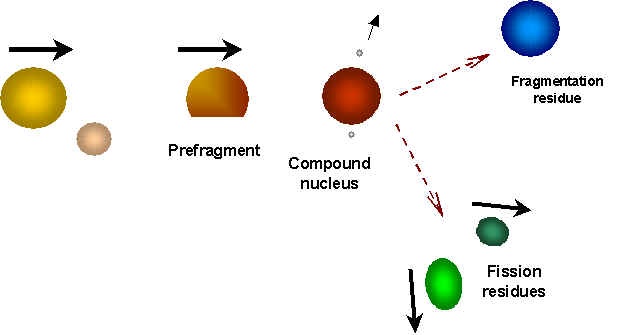Nuclear Reaction
A process in which changes can be made about in the structure of the nucleus is generally known as nuclear reactions.It can be represented as
X+a-------->Y+b
where
X=Target Nucleus
a=incident particle/projectile
Y=Product nucleus/heavy residual nucleus
b=Outcoming particle/product particle.
Rutherford was the first scientist to perform experiment on the nucleus of an atom
Q value of Nuclear Reaction/Reaction Energy:-
The Q value of nuclear reaction is defined as difference between the rest energies of the products and the reactants
if Q>0 then the reaction is exothermic
if Q<0 then the reaction is endothermic
If a and b are identical particles and X and Y are also identical,the reaction is scattering.
If the kinetic energy before and after is same(Q=0)the reaction is elastic scattering
If Q is not equal to zero then the reaction is inelastic scattering.
Compound Nucleus
When a nucleus absorbs a projectile,it becomes excited and unstable,this nucleus is known as compound nucleus.
X+a------>{ C }------>Y+b
here C is the compound nucleus.
The compound nucleus disintegrates,the product nucleus and the final particle are formed.
According to Neil Bohr,a nuclear reaction takes place in two steps.
1)The incident particle is absorb by the target nucleus to form a compound nucleus.
2)The compound nucleus disintegrates by ejecting a particle,leaving the nucleus.
Incident Particle + initial nucleus------->Compound Nucleus-------->Product nucleus+outgoing particle.



